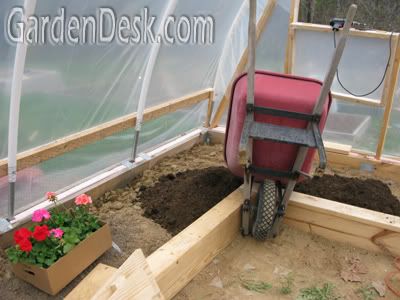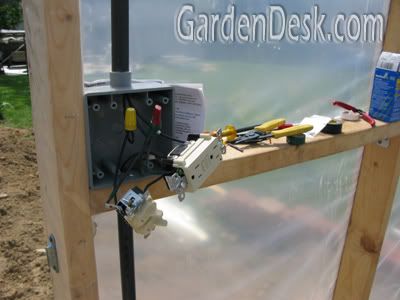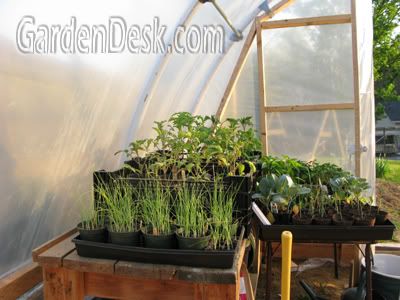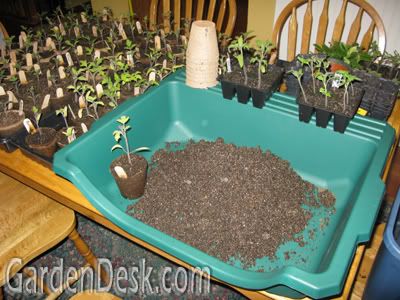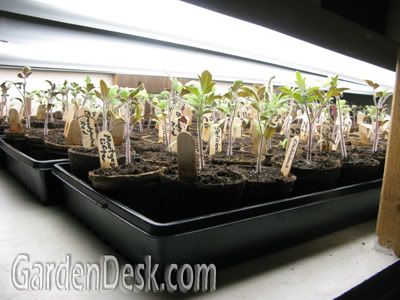Frost is a real Danger for Tomatoes and Peppers
Here in Northern Kentucky, most people believe that everything should have been planted in the vegetable garden already. Most people plant on the first nice day in May and believe that planting on Mother's Day is definitely safe. Most of the time this is true but the official average last frost date in my area is May 15th.
It is now past May 15th so it really should be okay now, right? You would think so, but the May 15th date is an average of the last 50 years or so. If you remember from Math class how to find the average, that means that sometimes the last frost is after the average date. That is what almost occurred last night. The weather forecast called for a frost advisory, and since frost is deadly for tomatoes and peppers, I had to protect them.

It was easy to cover the beds that I used last Fall as my stoop houses because they were already equipped with a place to add hoops. I then just covered the hoops with plastic. The main tomato bed that I have planted was not used last year for hoops so I had to do something different.
I simply pounded some scrap lumber in the ground as end posts and attached a cross beam.

Then I draped a piece of plastic sheeting over the beam to make a quick tee-pee over the tomato plants. The only thing you have to be sure of with this method is that the plastic is not touching the plants. The frost and cold can go right through to the plant leaves if they are up against the plastic.
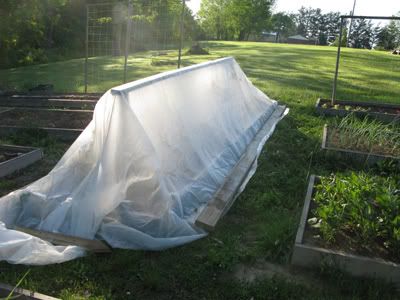
The temperature in the garden got down to 35 degrees, only 3 degrees above freezing! I don't think we actually had a frost, but I was still glad to protect these heat-loving plants. They seemed to make it through the night okay.

I only have about 15 of my 75 tomato plants in the garden so far, so it wasn't hard to cover them all. I'm glad I still have the others inside the greenhouse because the weather this spring has been cold and rainy. I will not be getting ripe tomatoes by June 5th like last year. At this point, having ripe tomatoes by July 4th sounds good.
Oh well, I just hope that we don't have any more 35 degree nights at least until October.






